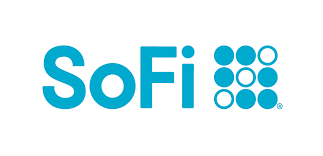3 Smart Moves to Make Before Interest Rates Fall Again

The Federal Reserve is in "wait and see" mode, as we've yet to see the economic impact of the Trump administration's tariffs. Interest rates haven't changed since December. However, traders and analysts still expect rate cuts later this year.
You shouldn't make any dramatic changes just because interest rates may drop soon. That said, there are some steps you can take to set yourself up for success. Here are a few to consider.
1. Open a certificate of deposit
Certificates of deposit (CDs) offer guaranteed interest rates for a fixed period of time -- typically between 3 months and 5 years. Your rate is locked in, no matter what the Fed does. That makes CDs a great hedge against falling interest rates.
Right now, there are still CDs that pay as much as 4.00%-4.50% APY, depending on the term. When it comes to safe, guaranteed returns, you can't do much better than that.
Say you deposit $10,000 in a 5-year CD yielding 4.00%. When the CD matures, you'll have earned about $2,200 in interest.
Now let's say you instead put that money in a high-yield savings account with a 4.00% APY, but your rate steadily drops to 2.75% over the next five years. You'll earn about $1,800 -- roughly $400 less.
Just keep in mind that you don't want to withdraw your CD funds early. If you pull money out before the maturity date, you'll likely pay a penalty of several months' worth of interest. So before you commit, make sure you're comfortable leaving your deposit untouched for the entire term.
If you want a high APY but don't want to lock your cash up for years, then the LendingClub 14-month CD is one of the best options you can find now. It pays a 4.25% APY. That's generous compared to most 12-month CDs, and this special offer sweetens the deal by giving you an extra two months of high, guaranteed interest. And the minimum deposit is just $500. Click here to open a LendingClub 14-month CD today.
2. Look into refinancing
If you have a mortgage with an interest rate around 7% or more, then now is a good time to plan for a refinance. Mortgage rates are still high, but if the Fed cuts interest rates, then mortgage rates will drop, too.
It's possible that rates drop by 0.5 percentage points or more within the next year. For some homeowners, that'd be enough to make refinancing a big money-saver.
If you can reduce your rate by about 1 percentage point or more, then refinancing could save you thousands of dollars (or even tens of thousands). But you have to factor in the closing costs of the new loan, too.
So decide how much interest rates need to drop before you should refinance. Your lender can help you figure it out and also tell you what sorts of closing costs you can expect to pay.
You might even start setting aside some money for the closing costs. Even if you don't refinance any time soon, you won't regret having some extra cash in savings.
3. Put your savings in a high-yield savings account
This is timeless advice. No matter where interest rates are headed, your cash savings should be earning as much interest as possible.
However, if interest rates fall, it'll be more important than ever to earn the best APY available. Even now, most savings accounts don't pay enough interest to keep up with inflation, which means your savings are losing value.
If your current savings APY is under 3.60%, then it's time to switch. The best high-yield savings accounts pay at least that much, and they also have no monthly fees.
In fact, you might be able to earn as much as 4.40% APY just by switching banks. Even if rates drop, you'll be earning far more interest than the average saver.
Our Research Expert
We're firm believers in the Golden Rule, which is why editorial opinions are ours alone and have not been previously reviewed, approved, or endorsed by included advertisers. Motley Fool Money does not cover all offers on the market. Motley Fool Money is 100% owned and operated by The Motley Fool. Our knowledgeable team of personal finance editors and analysts are employed by The Motley Fool and held to the same set of publishing standards and editorial integrity while maintaining professional separation from the analysts and editors on other Motley Fool brands. Terms may apply to offers listed on this page. APYs are subject to change at any time without notice.


